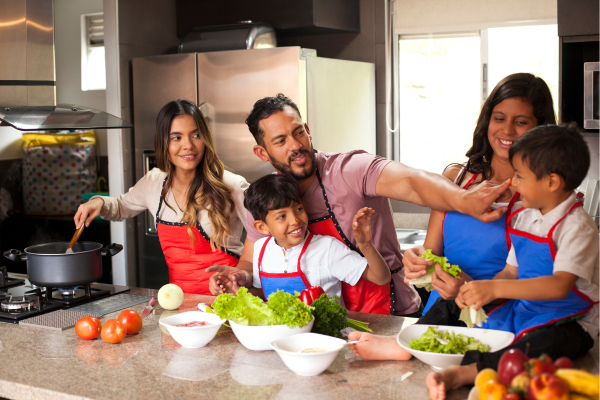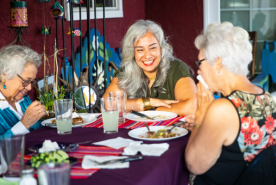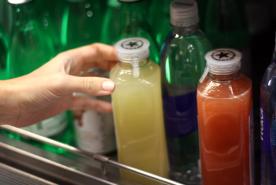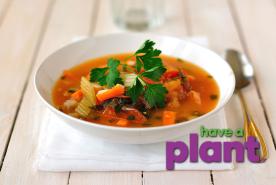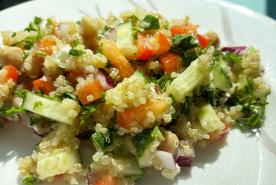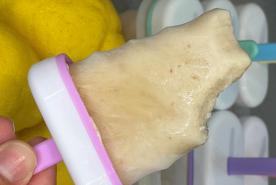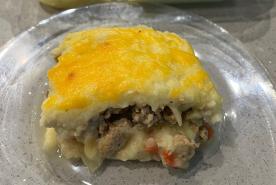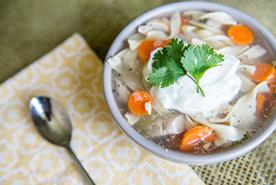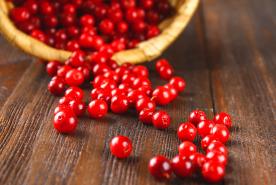August 19, 2024
Everyone has different nutritional needs. Do not change or adjust your diet before speaking with a kidney dietitian or a healthcare provider first.
With careful guidance from a kidney dietitian, routine check-ins with a nephrologist, and an understanding of serving sizes, we, at the National Kidney Foundation, believe that most foods can fit into a kidney disease diet–even high-potassium ones.
Wondering how that is possible? Keep reading to find out how.
Understanding Potassium
Potassium is an essential mineral that regulates heart function, nerve impulses, and more. It’s found in many different foods including;
- Fruits
- Vegetables
- Some dairy products
- Beans and legumes
- Red and lean meats
People with kidney disease may struggle to maintain proper levels of potassium since the kidneys are responsible for managing it within the body. As a result, some may have potassium levels that are too low or too high. Both conditions can be life-threatening if not managed properly.
- Low potassium or hypokalemia: Generally occurs during the earlier stages of kidney disease. People with low potassium or who are at risk of low potassium may need to eat a higher-potassium diet.
- High potassium or hyperkalemia: Generally occurs during the later stage of kidney disease. People with high potassium or who are at risk of high potassium may need to take medications like potassium binders.
Regardless of potassium restrictions, it is possible and potentially beneficial to follow a plant-based diet. Studies have found that following a healthy plant-based diet reduces risk of death in those with kidney disease.
“You don’t have to cut potassium out just because you're on dialysis or your kidneys don't work,” Registered dietitian Jessianna Saville said. “If you're doing a good nutrient-dense plant-based diet, you may feel a lot better. It's very doable. Work with a kidney dietitian. They can help guide you.”
Join the NKF Blog Newsletter
Get inspirational stories and kidney disease resources delivered to your inbox every month. You'll gain practical insights and expert advice to help you better understand and manage your kidney health no matter where you are on your kidney journey. Subscribe today.
Planning Ahead
Now that you have a better understanding of potassium it’s time to plan. Planning is key to fitting high-potassium foods into a low-potassium diet.
- Meet with a kidney dietitian or nephrologist to learn your daily potassium limits. Ask how you can add some of your favorite high-potassium foods safely into your diet.
- Learn and keep track of the potassium content of different food items. A high-potassium food contains 200 mg of potassium or more. A low-potassium food contains less than 200 mg of potassium per serving.
- Learn how to leach or remove some potassium from vegetables.
- Use your knowledge to plan out meals in advance. Adjust serving sizes or remove foods until you equal your potassium allowance.
- Schedule routine check-ups and blood testing to help ensure your potassium levels are safe. Keep track of your potassium levels overtime to get a better idea of how different foods affect your body.
You can also cut the serving size of a high-potassium food until it is less than 200 mg. Moderation is important but only consuming smaller servings of high potassium foods may not provide all the other nutrients you need to stay healthy.
Fruits Full Serving Size
| Fruit1 | Serving Size | Potassium |
| Guava | 1 cup | 688 |
| Soursop | 1 cup | 626 |
| Kiwi | 1 cup | 562 |
| Cantaloupe | 1 cup | 473 |
| Honeydew | 1 cup | 388 |
| Lychee | 1 cup | 325 |
| Peach | 1 cup | 293 |
| Loquats | 1 cup | 396 |
| Mandarin | 1 cup | 324 |
| Cherries | 1 cup | 306 |
Get a list of low potassium fruits.
Fruits Lower-Potassium Serving Size
| Fruit | Serving Size | Potassium mg |
| Guava | ¼ cup | 172 |
| Soursop | ¼ cup | 156.5 |
| Kiwi | ¼ cup | 140.5 |
| Cantaloupe | ¼ cup | 118.25 |
| Honeydew | ½ cup | 194 |
| Lychee | ½ cup | 162.5 |
| Peach | ½ cup | 196.5 |
| Loquats | ½ cup | 198 |
| Mandarin | ½ cup | 162 |
| Cherries | ½ cup | 153 |
Vegetables Full Serving Size
| Vegetable | Serving | Potassium mg |
| Water chestnuts | 1 cup | 724 |
| Plantains | 1 cup | 663 |
| Sweet potato, cooked | 1 cup | 572 |
| Parsnips, cooked | 1 cup | 572 |
| Broccoli rabe, cooked | 1 cup | 550 |
| Mushrooms, portabella, cooked | 1 cup | 529 |
| Artichoke, cooked | 1 cup | 480 |
| Carrots | 1 cup | 410 |
| Snow peas, cooked | 1 cup | 384 |
| Red bell pepper | 1 cup | 314 |
Get a list of low potassium vegetables.
Vegetables Low-Potassium Serving Size
| Vegetable | Serving | Potassium mg |
| Water chestnuts | ¼ cup | 181 |
| Plantains | ¼ cup | 165.75 |
| Sweet potato, cooked | ¼ cup | 143 |
| Parsnips, cooked | ¼ cup | 143 |
| Broccoli rabe, cooked | ¼ cup | 137.5 |
| Mushrooms, portabella, cooked | ¼ cup | 132.25 |
| Artichoke, cooked | ¼ cup | 120 |
| Carrots | ¼ cup | 102.5 |
| Snow peas, cooked | ½ cup | 192 |
| Red bell pepper | ½ cup | 157 |
Get Creative In the Kitchen
Now that you know what to shop for, turn your ingredients into masterpieces. Check out NKF’s Nutrition Coach for new recipes, kidney superfoods, and more.
